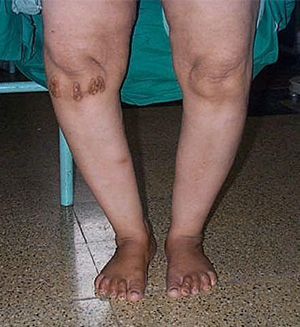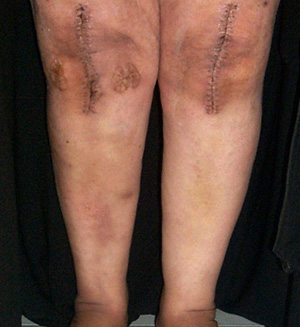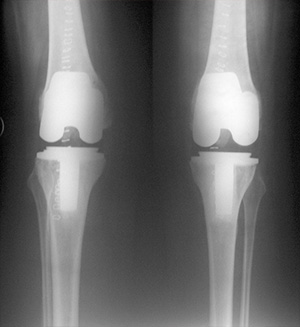The operation is performed under Spinal anaesthesia. We sometimes place with an Epidural catheter for post-operative pain relief. Dr Pispati makes as small an incision as possible (Minimally Invasive surgery). The patella (knee cap) is moved out of the way, and the ends of the femur and tibia are cut to fit the prosthesis. Similarly, the undersurface of the knee cap is sometimes cut to allow for placement of an artificial patella component.
The parts of the prosthesis are implanted onto the ends of the thigh bone (femur), the shin bone (tibia), and the undersurface of the knee cap (patella) using a special bone cement. Usually, metal is used on the end of the femur, metal/plastic on the tibia and plastic on the patella, for the new knee surface.
We often use Robotic or Patient Specific Instrumentation (PSI) to ensure that the Knee Replacement parts are placed in good alignment. We also use specialized Knee Replacement designs that allow you greater movement (high flexion knees). We use Muscle-splitting and muscle-sparing techniques to allow you quicker recovery.

X rays of complex knee replacement
To minimize pain after surgery, we use pain relief injections, patient-controlled analgesia (PCA), epidural catheter or adductor 'block' to control your pain for the first 2 days after surgery. The pain should gradually decrease, and by the third day after surgery, oral medications may be sufficient to control your pain. to monitor the function of your kidneys and hydration level. This will be removed on the second or third day after surgery.
Almost all or patients stand and walk on the same day they are operated and are able to go home in 3-4 days. Most patients are happy with their result in about 2 to 3 months, and several patients are able to sit on the floor 3 months after surgery of needed.
A good exercise program is needed after surgery for about 3 weeks. The more you move, the faster you recover. Remember, “Life is Movement, and Movement is Life”.


